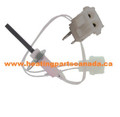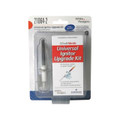 Loading... Please wait...
Loading... Please wait...- Home
- DISCOUNTS
-
FAQ's
- Q. Inventory Stock Check
- Q. What does HVAC stand for?
- Q. What is the purpose of a furnace filter?
- Q. Why do I need to change my filter regularly?
- Q. How often do I need to change my furnace filter?
- Q. Which filter should I buy?
- Q. How to I locate my furnace filter or air conditioner filter?
- Q. How do I change a furnace filter?
- Q. What is a high efficiency filter
- Q. What is a MERV rating?
- Q. What kinds of things can cause my air conditioner to operate inefficiently?
- Q. Why do I have ice on my pipes?
- Q. How often do you change the air filter in an air conditioner?
- Q. Air conditioning filter not getting dirty ?
- Q. Air conditioning blower on, but getting little airflow.
- Q. Can you run an AC without a filter ?
- Q. How can I cut down on indoor air pollution?
- Q. What regular maintenance do heating and air conditioning systems need?
- DISCLAIMER ** Read before ordering
- Blog
- Shipping & Returns
- Warranty
Categories
Popular Brands
Our Newsletter
- Home
- Igniters and Pilots
- Hot Surface Ignitors
Hot Surface Ignitors
Hot Surface Ignition - Canada
The hot surface ignitor or HSI is the most commonly used electronic ignition system used today. These ignitors are reliable, they eliminate the need for a pilot, and they are relatively inexpensive. HSI's directly ignite the burner and all they require is a flame sensor. The flame sensor detects the successful ignition of gas and proper flame occurring in the burners. Once proper ignition has been achieved, the HSI turns off.
The hot surface igniter works like a light bulb filament, except instead of light, we want the glowing red hot heat from the element. The hot surface igniter is placed in the flow of gas entering the burners. The HSI is usually made from a material like silicon nitride or silicon carbide (more fragile) and as electricity passes through the igniter, it will glow red hot.
When the thermostat calls for heat 24 volts are sent to the electronic ignition control module which energizes the furnace blower and other systems and sends 120 volts to the HSI. The HSI heats up to around 1,800°F to 2,500°F. Once the proper HSI operating temperature is achieved, the gas valve is opened introducing gas to the burner which is ignited by the red-hot element of the HSI. Once a proper flame is sensed by the flame sensor, the HSI is shut down. NOTE: Some furnace designs have the HSI also act as a flame sensor (local sensing) instead of having a remote sensing rod in the burner flame (remote sensing).
Under normal conditions the HSI should last for 3-5 years. However, it will eventually crack and need to be replaced. It is highly recommended that a spare is kept on hand during light-up season.
Deals of the Month
-
1
Popular Products
New Products
-
Canadian $109.22

-
Canadian $119.99

-
Canadian $99.22




